As a result, while the Ancient Celts may have had their own folklore (such as the Tuatha de Danann), stories about fairies such as Leprechauns that are associated with Ireland came much later. As you’ll discover, Irish Fairies seldom resemble the ‘traditional’ depiction of fairies. Artwork featuring flying beings with wings was created in the 19th century; Irish Fairies possess supernatural powers such as the ability to fly without wings.
History of Irish Fairies
In the era when the Celts were still pagans, storytellers, also known as the seanchaí, remembered and recited a variety of Irish legends featuring supernatural beings such as fairies. In the age of Christianity, the mixture of Celt and Christian folklore was combined into many of the stories told today.
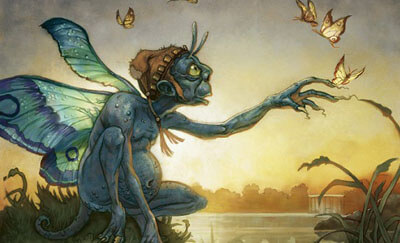
The legend of the Changelings is popular throughout Europe, but especially here in Ireland.
Tales of the Tuatha de Danann go back thousands of years. Translated as ‘tribe of Danu’, they were a race of people that possessed incredible, almost God-like, powers. According to legend, they ruled Ireland from the early 19th Century BC until the end of the following century. The tribe was defeated by the Milesians, so they fled into the Sidhe underground. After that, they became known as the Daoine Sidhe and had children with the likes of Fionn mac Cumhaill.
Also known as the Aos Sí, these underground people became smaller over generations. The tales of these diminutive figures is in line with the Celtic tradition of believing in tiny people forced into hiding by hordes of invading humans. Other figures such as the Pooka are also possibly from Celtic pagan times; the Pooka is associated with the Samhain festival.
In the post-Christian era, other tales emerged including the legend of the Banshee. There are accounts of this female spirit dating from as far back as the late 14th century. Indeed, it is likely that the Banshee is pre-Norman mythology. You may be surprised to learn that the Leprechaun is probably a relatively recent fairy (more on that later). The first mention of these little people in the English language was apparently in 1604.
In the early modern era, belief in Irish fairies was still relatively widespread. Tales of various unusual creatures were told and believed in Dublin well into the 19th century while the belief remained strong in the western parts of Ireland until the middle of the 20th century. There are a handful of stories that speak of sightings in the 21st century.
The Fairy Realm
Thousands of years ago, people believed that the Fairy Realm was located in the Hollow Hill where the Tuatha de Danann was forced to flee. It is a magical portal which allows gods and fairies to come and go as they please between worlds. Another concept in the old Celtic tradition was that the Fairy Realm was located in a place called Tír na nÓg, which means ‘The Land of the Young.' This wonderful land could be found across the sea from the West of Ireland and those who lived there avoided death and remained eternally young.
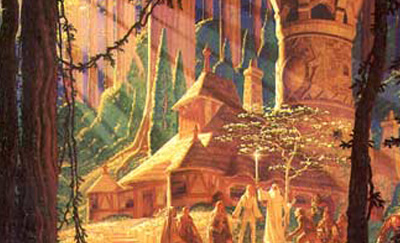
One of the most famous of Fairy Realms must be Tír na nÓg - The Land of the Young.
Other tales suggest that the legendary Irish hero, Fionn mac Cumhaill, lived in a place now known as the Hill of Allen in County Kildare. However, there are suggestions that fairies made themselves known all around Ireland. Possible locations include the far West of Kerry, Lough Gur and a small patch of untilled land near the Burren in County Clare.
Types of Irish Fairies
There are numerous fairies specifically associated with Ireland, but we will look at five of the best known.
Banshee
Also known as ‘bean-sidhe,' or ‘woman of the fairy,' the Banshee is a harbinger of death. According to legend, she appears to members of certain Irish families to warn them of impending death. In the 17th-century text Memoirs of Lady Fanshawe, the Banshee is described as a woman in white with a ghastly pale complexion and white hair. She appears as a wailing spirit and sometimes wears the bloodstained clothing of the person about to die.
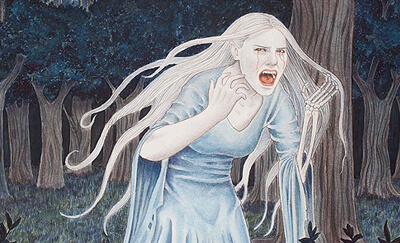
This fascinating wailing spirit is extensively covered in our popular Banshee article.
It is important to note that the Banshee is seldom seen. One famous case involved King James I of Scotland who was visited by the wailing woman and told of his forthcoming death at the behest of the Earl of Atholl in 1437. While some legends say that if you hear her piercing shriek, you will die within 24 hours, there are cases when the soon to be deceased person is a relative of the individual that hear the cry.
Leprechaun
The Leprechaun is arguably the most famous Irish fairy of them all. They are Earth Fairies that specialise in shoemaking. Leprechauns are known for being extremely small, wearing green clothes and hiding treasure. Despite their popularity, the first accounts of Leprechauns don’t appear in English literature until the early 17th century.
There is a suggestion that they appeared in The Adventure of Fergus mac Leti as early as the 7th or 8th century. In that text, Fergus, the King of Ulster, discovered three water sprites and asked them for the power to swim underwater. However, this luchorpain (small water sprite) bears little resemblance to the modern depiction of Leprechauns.
According to W. B. Yeats in his 1888 book Fairy and Folk Tales of the Irish Peasantry, leprechauns are small, withered old men. The popular image of these little men also suggests they are ill-tempered and mischievous.
Pooka
Also spelled Puca, this Irish fairy is one to fear because he appears after nightfall and can transform its shape into all manner of horrific forms. There are various tales of the Pooka which tell of its ability to change into bats, eagles, dogs, goats or black horses. In the middle of the night, the Pooka may destroy crops and terrify livestock, but not all stories are negative.
In Ancient Legends, Mystic Charms, and Superstitions of Ireland, written by Lady Wilde in 1887, she writes about how a Pooka helped a young man named Phadrig enjoy a life filled with joy and prosperity. He made friends with the spirit who in turn helped thresh the corn. Phadrig was so happy that he created a special suit of clothes for the Pooka.
The spirit disappeared, but on the day of Phadrig’s wedding, he found a goblet of wine. Phadrig guessed it was a gift from his old friend and drank it. He married his bride and enjoyed happiness and prosperity for the rest of his days.
Dullahan
This Irish fairy appears as a ghostly horseman and is associated with County Sligo and County Down. A number of people claim to have seen the Dullahan as it rode past; it is depicted as a headless horseman who holds his head under the crook of his arm. The head apparently glows, so the Dullahan uses it as a lantern to help guide him during the night.
According to legend, this fairy is capable of looking into its head and seeing the home of a dying person. In a rather macabre twist, the Dullahan uses a human spine as a whip!
Changelings
The legend of the Changelings is popular throughout Europe, especially in Ireland. These creatures are the deformed children of fairies who are abandoned. The parents tend to swap the Changeling with a human baby, and these creatures are described as sickly and abnormal. They either fail to pick up language or else their language skills are remarkably advanced. Some Changelings are constantly hungry and always crying.
The W. B. Yeats poem The Stolen Child was inspired by tales of fairies stealing human children and leaving Changelings in their place. The tale of these unwanted fairy babies continues to inspire literature and even movies in the modern era. The famous movie Labyrinth acknowledged the famous work of Maurice Sendak who wrote about Changelings in Outside over There in 1981.
Fairy Sightings in Ireland
Lady Fanshawe and the Lady of the Lake
One of the most famous sightings of a fairy in Ireland is arguably Lady Fanshawe’s brush with a banshee in County Clare in 1642. Along with her husband, Sir Richard, Lady Fanshawe stayed with Lady Honora O’Brien in her castle which was either near Castle Lake or Bunratty. She stayed in a room dozens of feet from the ground which overlooked a lake.
One night, she was awakened by a high-pitched scream and saw the apparition of a girl at the window. The spirit had red hair and pale skin. The spirit eventually vanished leaving the frightened Lady Fanshawe to ponder just what she saw.
The following morning, she was told about the death of a relative who had been hiding an illness from her. According to legend, the spirit she saw was that of a peasant woman. She was the wife of a previous owner of the castle. The unfortunate lady was murdered by her husband who drowned her in the lake.
Leprechauns in Limerick?
While there have been countless sightings of fairy folk going back many centuries, you may be shocked to discover that there are a reasonable number of 20th-century sightings too. In 1938, schoolboy John Keely claimed to have spoken to a fairy in the west of County Limerick. When he told his friends, they told him to go back and speak to it; this statement was made in jest because they didn’t believe him.
When Keely returned to the spot, the fairy was still there and when the boy asked him where he was from; the fairy replied: “I’m from the mountains and it’s all equal to you what my business is.” The following day, Keely met two fairies and held the hand of one. Had his friends not been spotted by the fairies, they may well have kidnapped the boy! It transpires that the other boys were setting up an ambush which suggests the fairies might have been leprechauns and the children wanted their treasure.
Encounters with Changelings
Several people have reported encounters with changelings including Kate Moloney who lived in a small village near Tulla, County Clare. In 1869, she was concerned about her daughter who had undergone a strange transformation and was in poor health. A ‘wise woman’ confirmed that Kate’s daughter had ‘changed’ and unfortunately, the child died soon after.
At the beginning of the 20th century, Reverend J.M. Spicer told Evan Wentz about a woman, who he referred to as Mrs. K., who was almost kidnapped by fairies in Castletown. She went to find her daughter, and at nightfall, she was suddenly surrounded by fairies that were in the process of bringing her towards the South Barrule Mountain. Mrs. K was only able to escape after calling out for her son.
Final Words
If someone claims to have seen or spoken to an Irish fairy, their tale is usually dismissed as fanciful. The thing is, sightings of fairies are so commonplace that it would be remiss of us to ignore them all completely. One thing is certain, these magical, some would say mythical, creatures are synonymous with Ireland, and they will continue to fascinate us till the end of time.

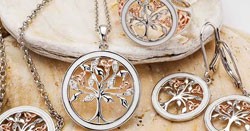
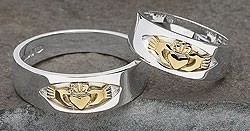
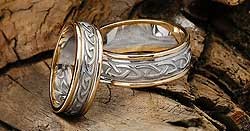
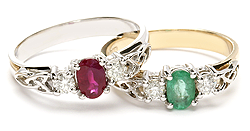
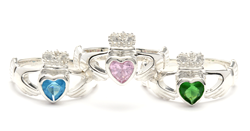
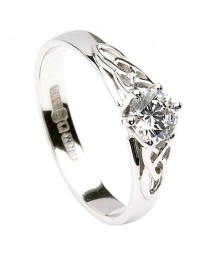 Trinity Engagement Ring
Trinity Engagement Ring  Sapphire Engagement Ring
Sapphire Engagement Ring 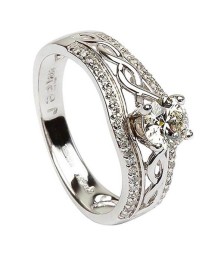 Celtic Engagement Ring
Celtic Engagement Ring 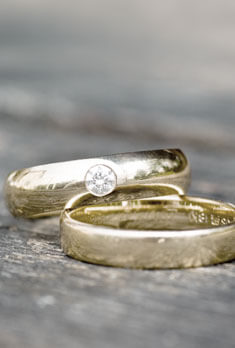

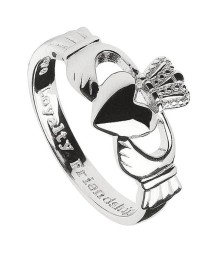 Men's Claddagh Ring
Men's Claddagh Ring  Claddagh Ring Pave
Claddagh Ring Pave 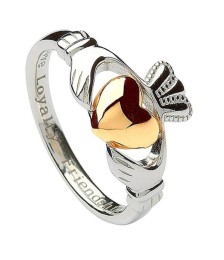 Claddagh with Gold Heart
Claddagh with Gold Heart 